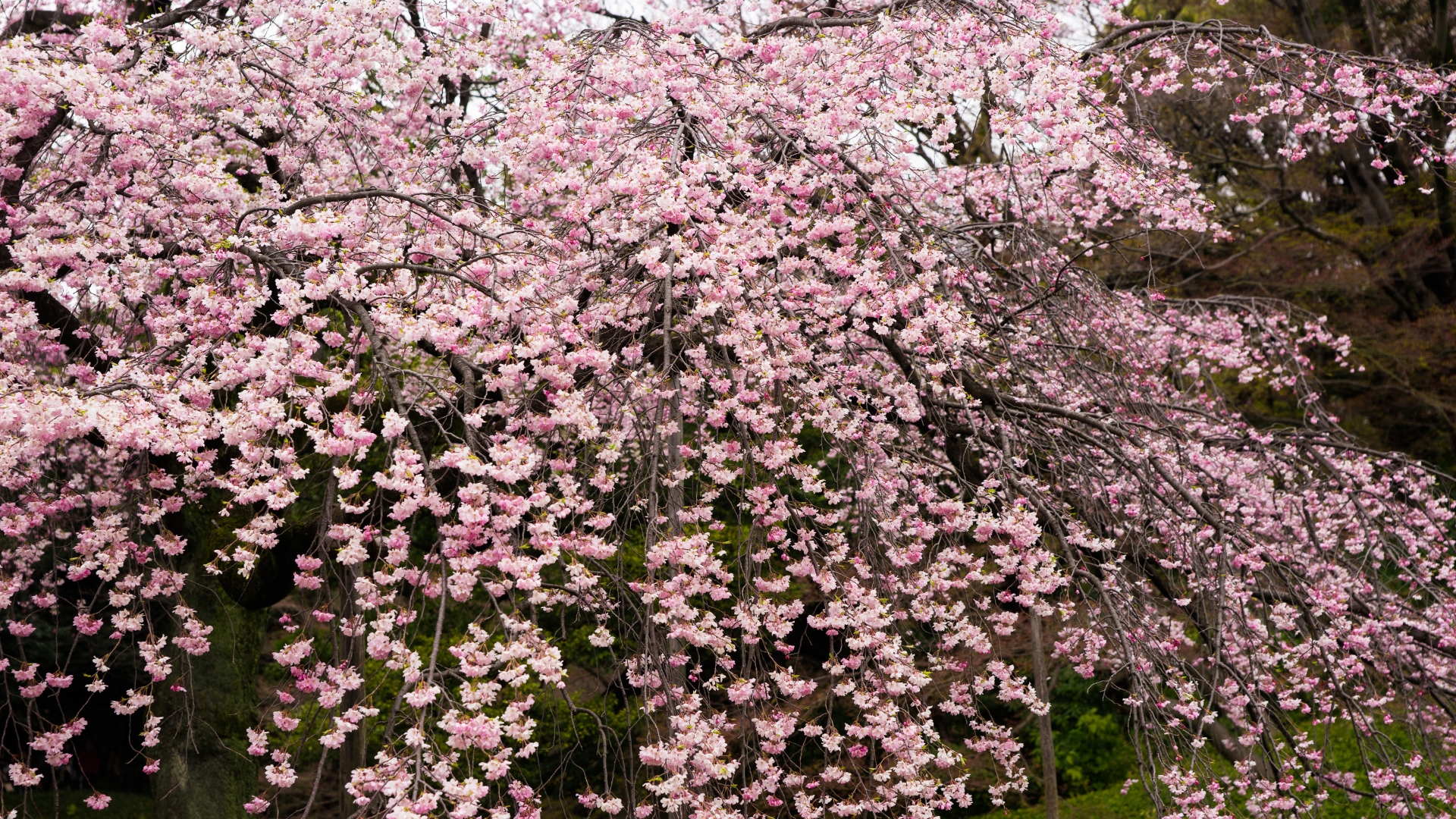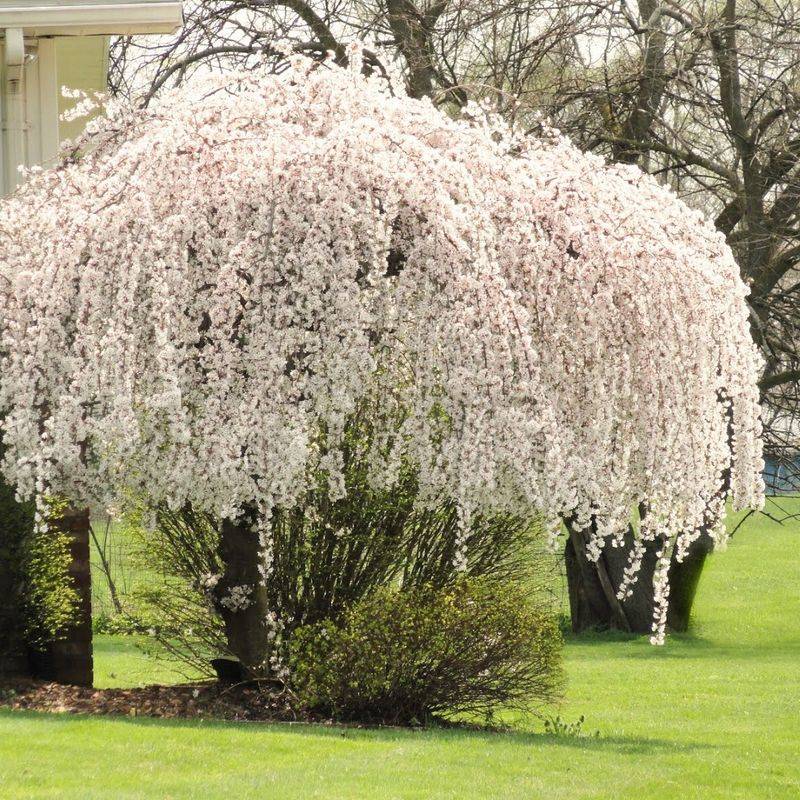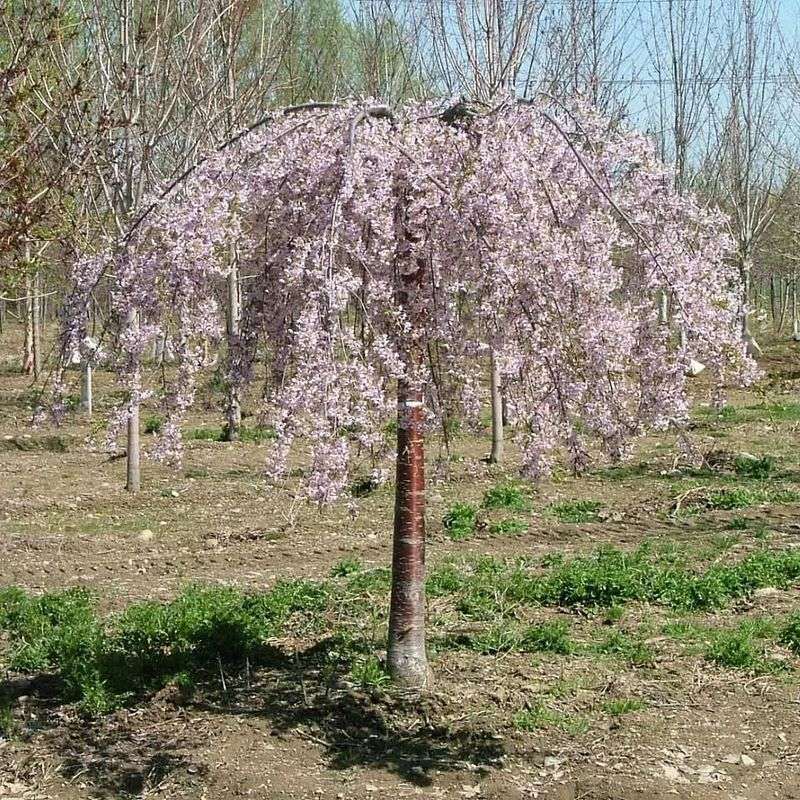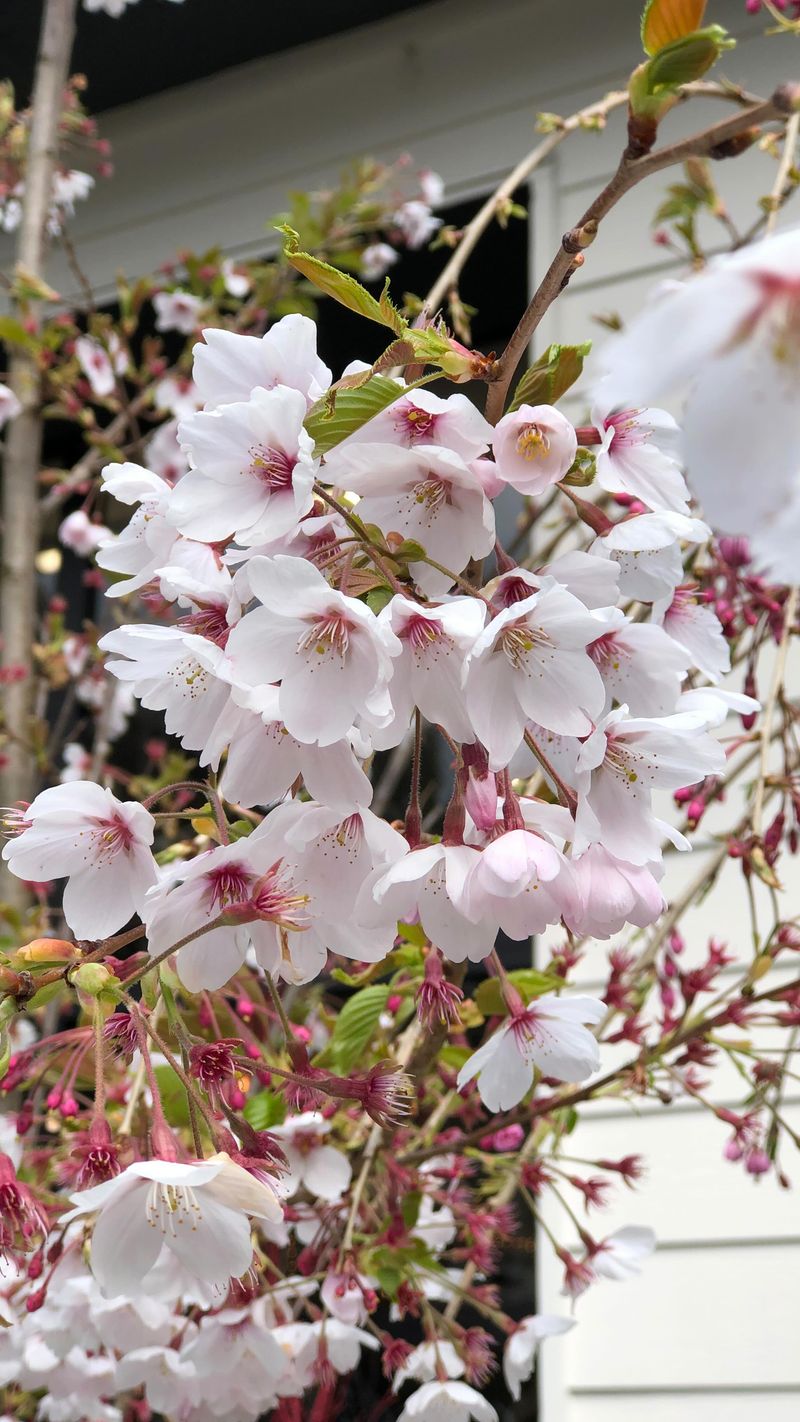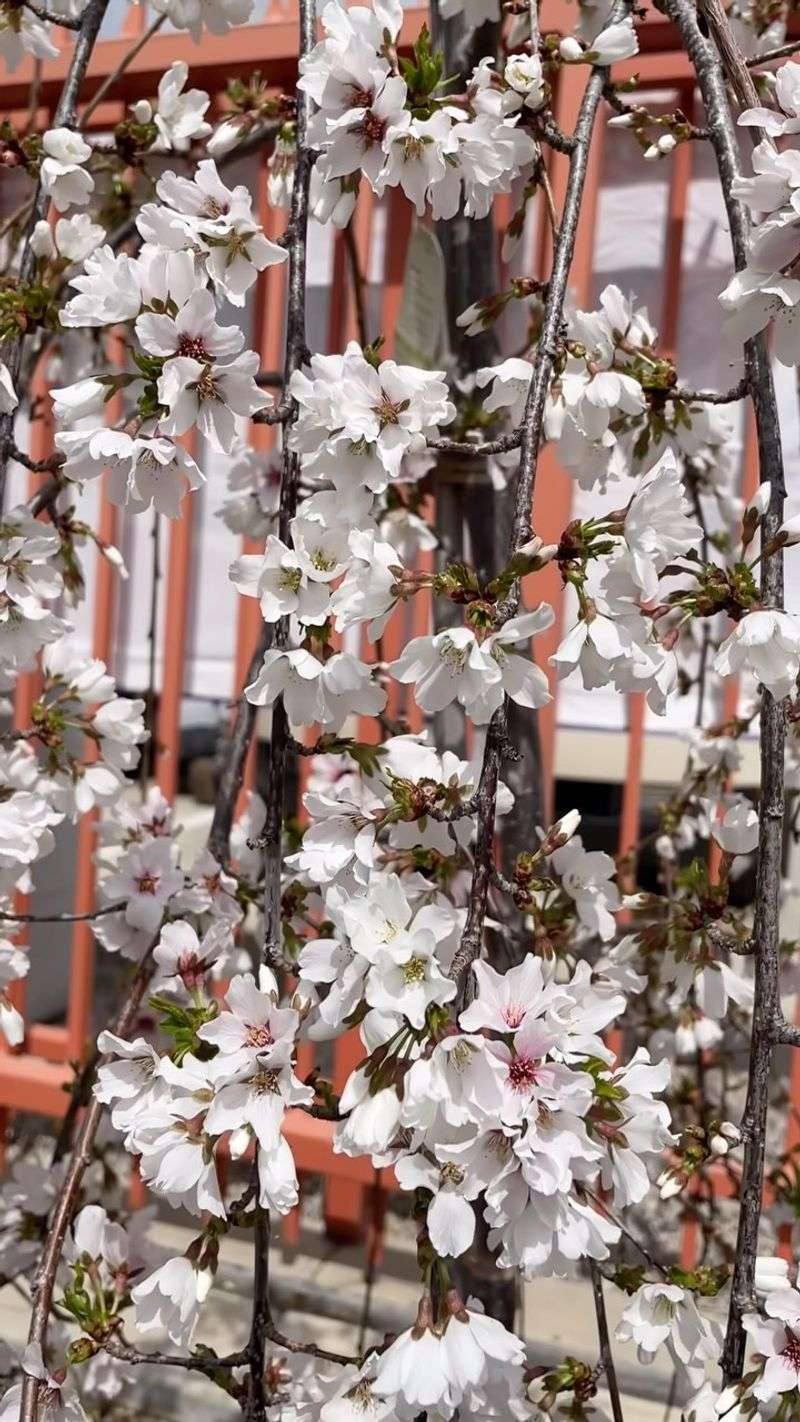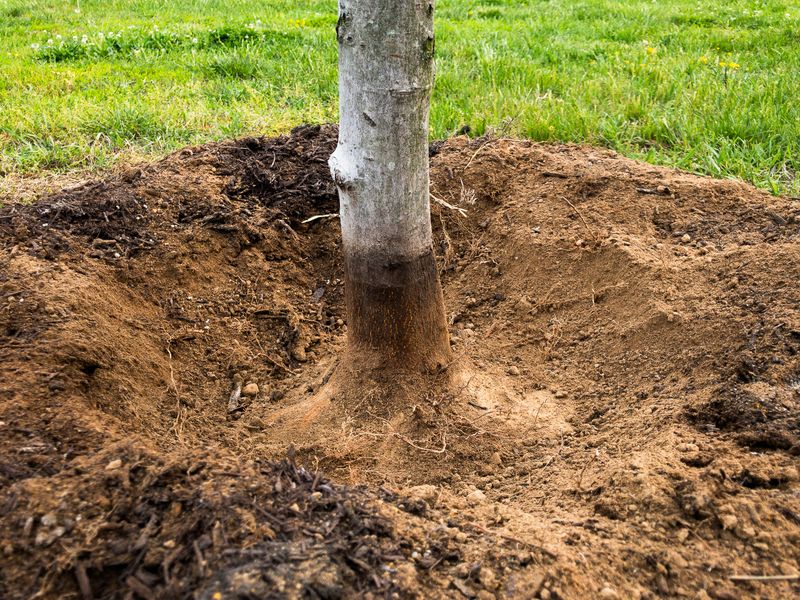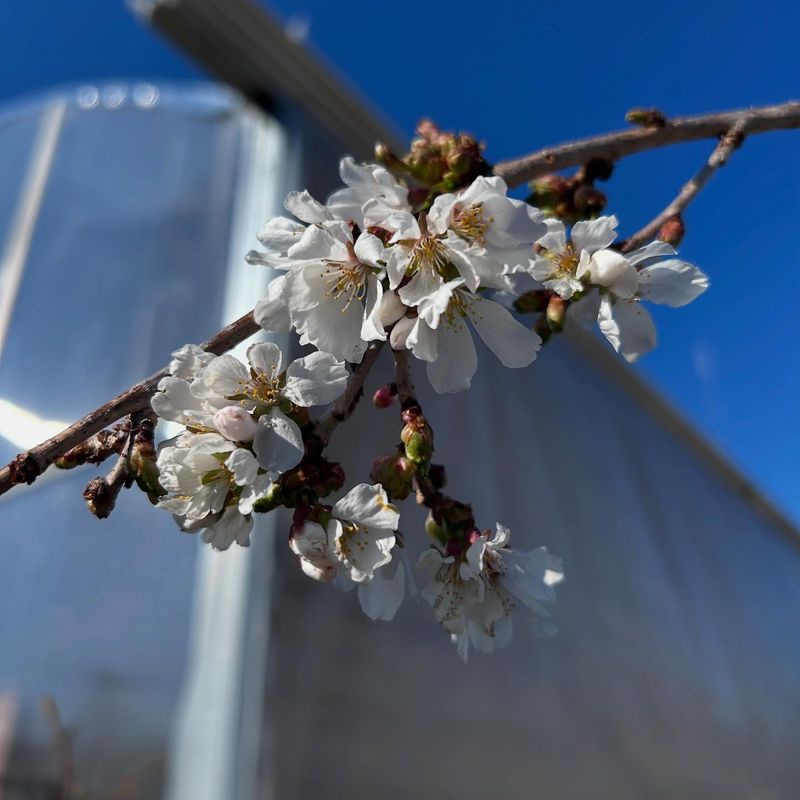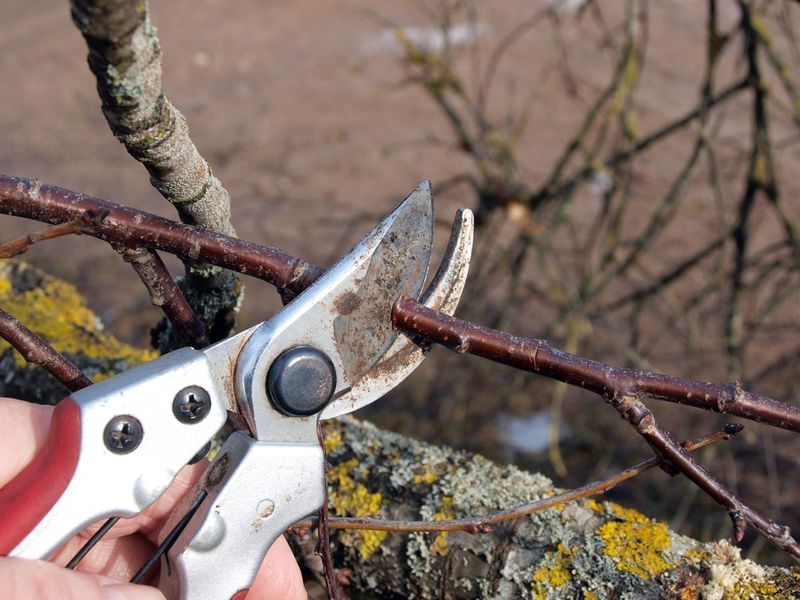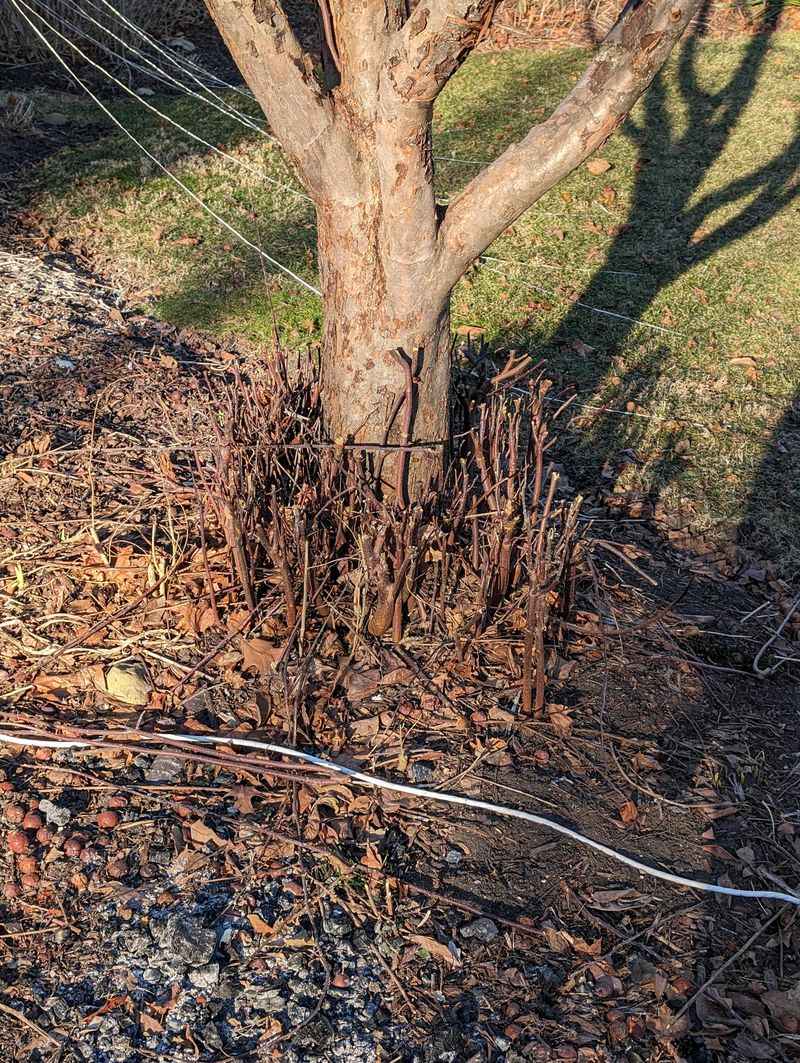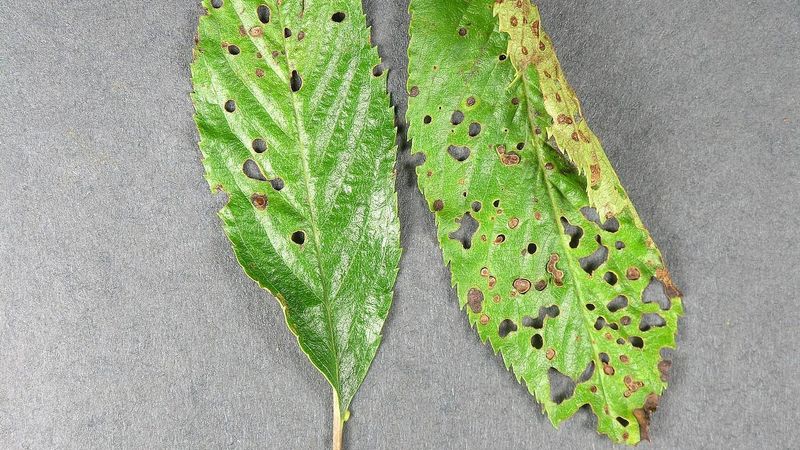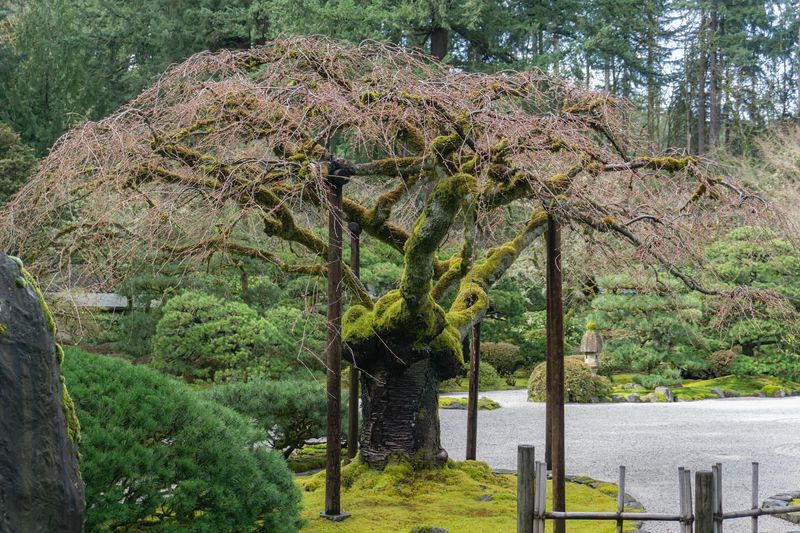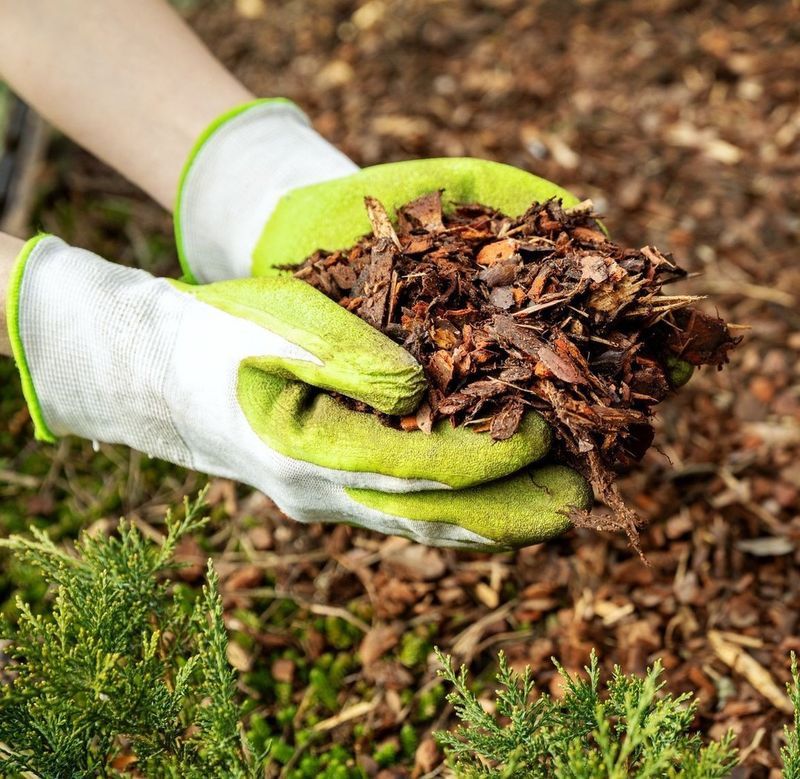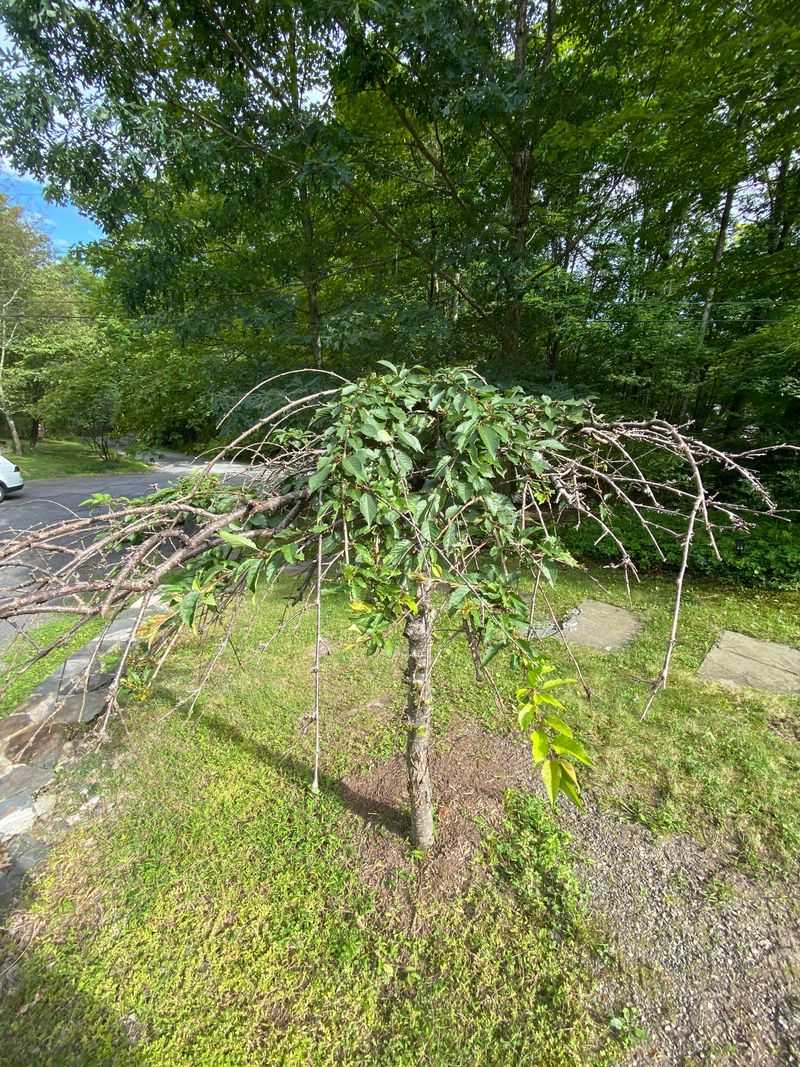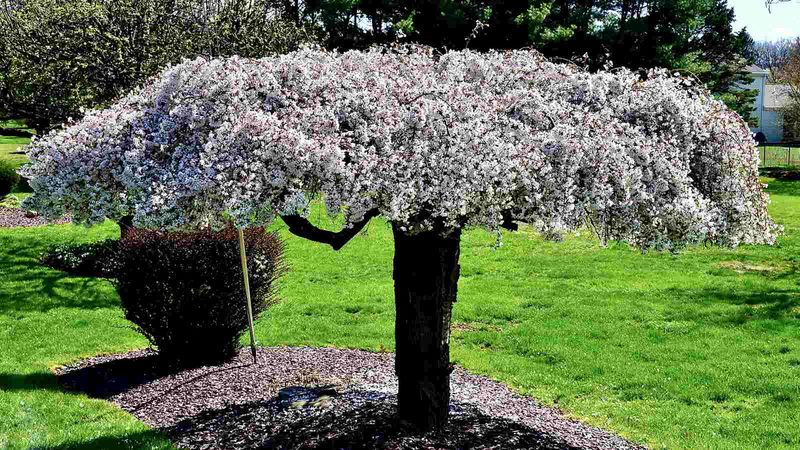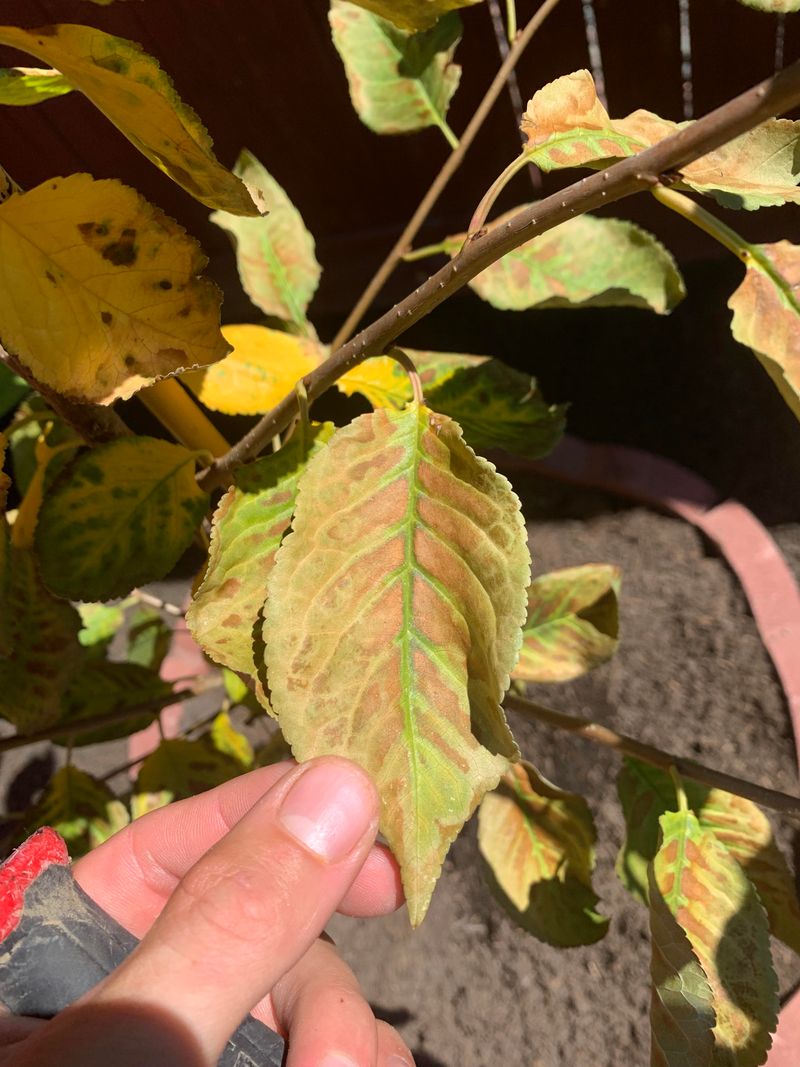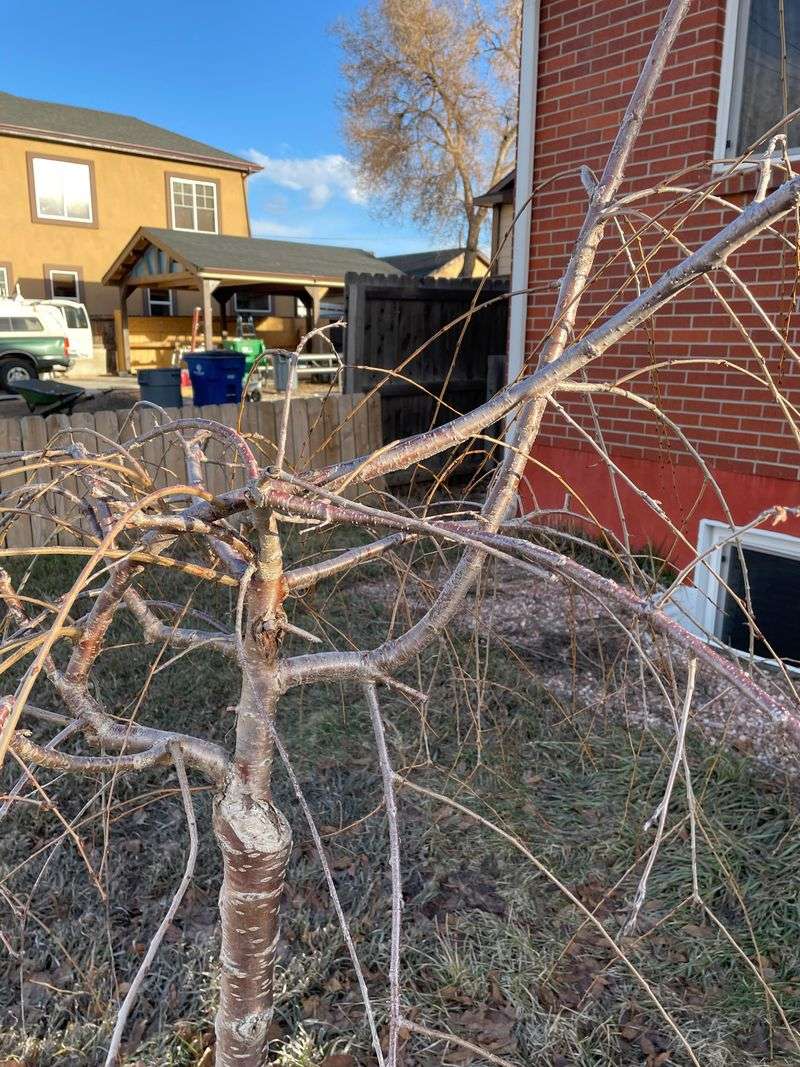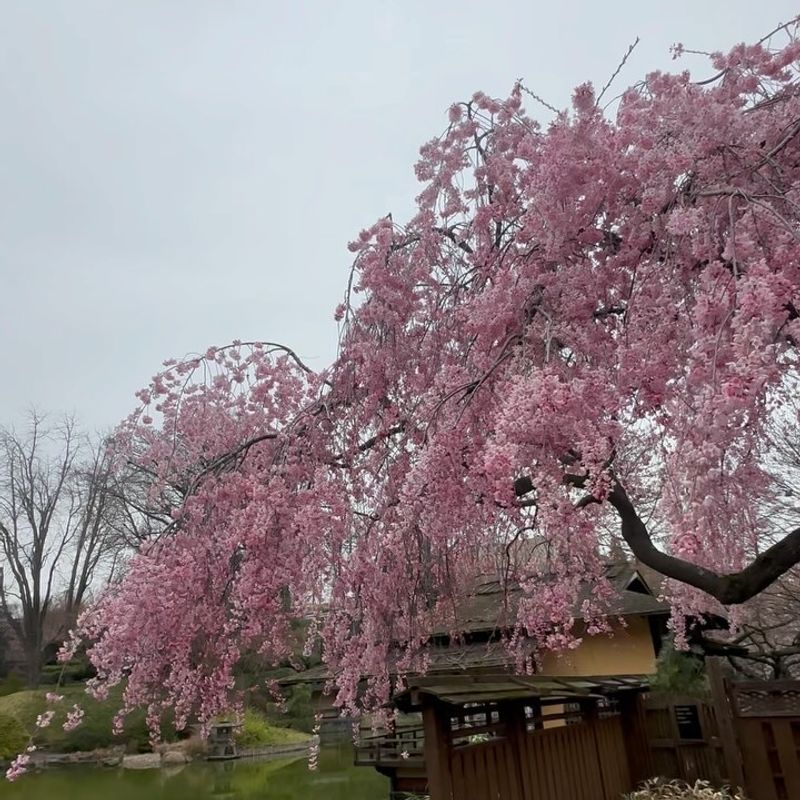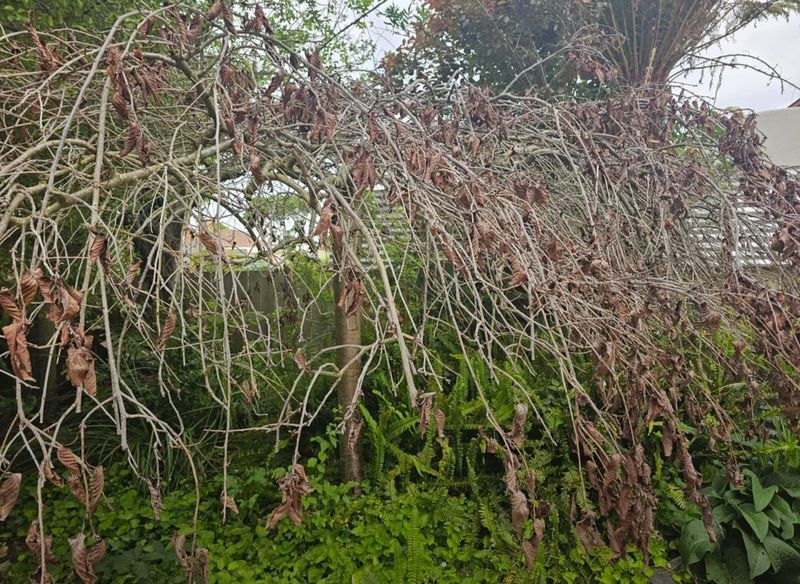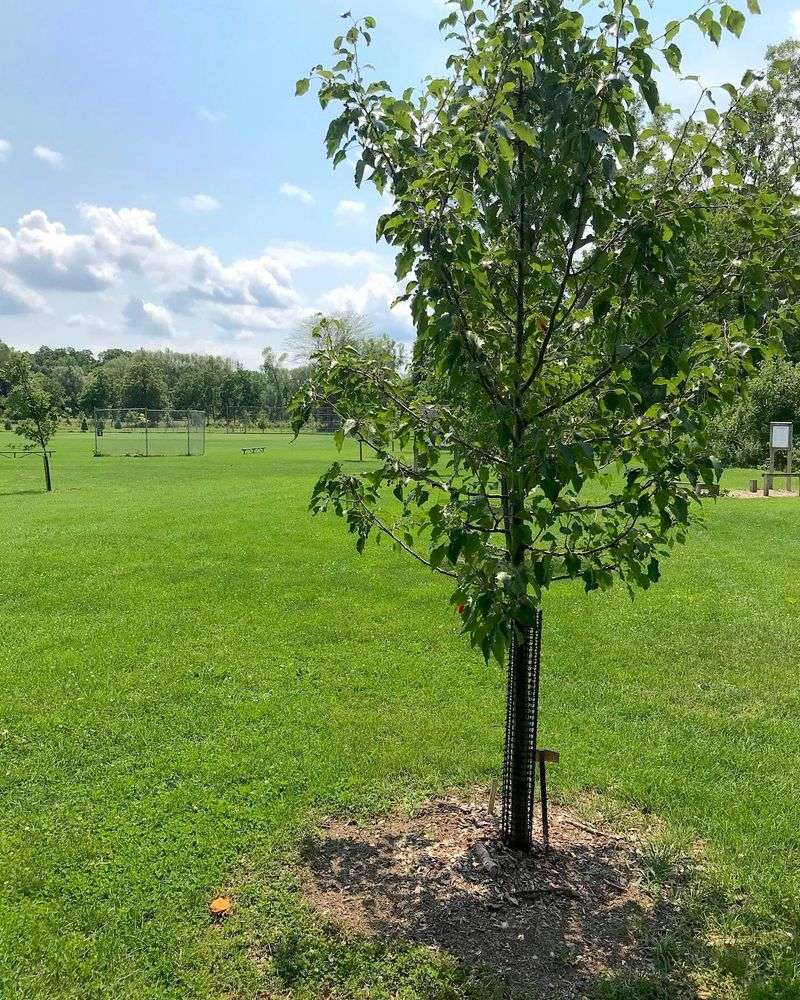Weeping cherry trees are prized for their graceful branches and stunning spring blooms, making them a breathtaking focal point in any landscape. But to keep these ornamental trees healthy and flourishing year after year, proper care and attention are essential. From choosing the right spot to avoiding common mistakes, a few key practices can make all the difference. In this guide, we’ll cover 13 expert tips for growing weeping cherry trees—and 5 things you should never do.
1. Choose The Right Planting Location
Finding the perfect spot for your weeping cherry tree is crucial. They thrive best in an area that gets full sun to partial shade. Avoid spots prone to strong winds which might damage young branches.
A location with morning sun and afternoon shade is ideal. Ensure there’s enough space for the tree to spread its branches elegantly without obstruction.
This way, your tree can flourish, showing off its beautiful, cascading branches and blossoms without interference. Selecting a spot with these conditions can lead to a healthier and more vibrant tree.
2. Ensure Well-Drained Soil
Healthy soil is the foundation of a flourishing weeping cherry tree. It needs well-drained soil to prevent root rot. Test your soil by digging a small hole and filling it with water.
If it drains within a few hours, it’s suitable. If not, consider amending it with sand or compost to improve drainage. Consistent soil moisture is key, but it should never be soggy.
Proper drainage ensures the roots receive the oxygen they need, supporting strong growth and vibrant blossoms for years to come.
3. Plant In Early Spring Or Fall
Timing is everything when planting weeping cherry trees. Early spring or fall is the best time, as these seasons offer mild temperatures and sufficient rainfall.
Planting during these times allows the tree to establish roots before the stress of summer or the chill of winter. Avoid planting during extreme weather conditions, as it may cause undue stress.
Choosing the right time ensures your tree has the best start, leading to healthier growth and more stunning blooms year after year.
4. Water Deeply And Consistently
Watering your weeping cherry tree correctly promotes deep root growth. Deep and consistent watering helps the roots grow deep into the soil, providing stability and access to nutrients.
Water at the base of the tree, ensuring the soil becomes thoroughly moist. Avoid frequent shallow watering, as it encourages surface roots susceptible to drying out.
During dry spells, increase watering frequency. This method supports a robust root system, helping your tree withstand environmental stresses.
5. Apply Mulch To Retain Moisture
Mulch is a gardener’s best friend, especially for weeping cherry trees. Applying a layer of mulch around the base helps retain soil moisture, suppress weeds, and regulate temperature.
Choose organic mulch like bark chips or shredded leaves. Spread it evenly, ensuring it’s not piled against the trunk to prevent rot.
Mulch not only keeps the tree hydrated but also enriches the soil as it breaks down, providing a steady supply of nutrients for healthy growth and vibrant blossoms.
6. Fertilize In Early Spring
Feeding your weeping cherry tree ensures it has the nutrients needed for vibrant growth. Early spring is the perfect time to apply a balanced, slow-release fertilizer.
Follow package instructions for the right amount, as over-fertilizing can harm the tree. Spread it evenly around the drip line, avoiding direct contact with the trunk.
This timing coincides with the tree’s natural growth cycle, supporting healthy foliage and a profusion of blossoms as the season progresses.
7. Prune To Shape After Flowering
Pruning your weeping cherry tree enhances its shape and encourages healthy growth. The best time to prune is right after flowering, allowing the tree to direct energy into new growth rather than seed production.
Remove dead or crossing branches to maintain an open canopy. Use clean, sharp tools to make clean cuts.
Pruning not only improves the tree’s structure but also allows sunlight and air to reach the center, reducing the risk of disease and promoting a beautiful, balanced appearance.
8. Remove Suckers Regularly
Suckers are vigorous shoots that can sap energy from your weeping cherry tree. These unwanted growths typically appear at the base or along the trunk.
Regularly inspecting and removing them ensures that the tree’s resources are directed towards the branches and blossoms. Use sharp pruning shears to cut them as close to the base as possible.
By doing so, you help maintain the tree’s health and appearance, allowing it to flourish and display its graceful, weeping form without competition.
9. Monitor For Pests And Diseases
Keeping an eye on the health of your weeping cherry tree is essential. Pests like aphids and diseases such as leaf spot can affect its vitality. Regularly check the leaves and branches for unusual spots, discoloration, or insect activity.
Early detection is key to addressing issues before they escalate. Use organic treatments or consult a professional if problems arise.
This vigilant monitoring helps ensure your tree remains healthy and continues to beautify your garden with its glorious blooms.
10. Support Young Trees If Needed
Young weeping cherry trees may need support as they establish themselves. If your tree is in a windy area or has a weak trunk, stakes can provide necessary stability. Use soft ties to secure the tree to the stakes without damaging the bark.
Check the ties regularly to ensure they’re not too tight. This temporary support helps the tree grow straight and strong, allowing it to develop a sturdy structure that can stand independently as it matures, showcasing its elegant branches and blossoms.
11. Protect Roots During Harsh Winters
Winter can be tough on weeping cherry trees, especially their roots. Insulating the root zone with a thick layer of mulch or straw can protect it from freezing temperatures.
In areas with harsh winters, wrapping the base with burlap adds extra protection. This insulation helps prevent frost heaving and root damage.
Ensuring the roots are safe during winter allows the tree to emerge healthy and ready to bloom when spring arrives, maintaining its beautiful presence in your garden year after year.
12. Allow Proper Air Circulation
Air circulation is crucial for a healthy weeping cherry tree. Crowded branches can lead to fungal diseases and pest infestations. Prune excess growth to open up the canopy, allowing sunlight and air to penetrate.
This practice not only reduces disease risk but also encourages robust growth and abundant flowering. Regularly monitoring and maintaining the tree’s structure ensures it remains healthy, vibrant, and a striking feature in your garden, with plenty of space to show off its cascading branches and blossoms.
13. Use Organic Compost Annually
Nourishing your weeping cherry tree with organic compost supports its growth and vitality. An annual application enriches the soil with essential nutrients.
Spread a layer of compost around the base, avoiding direct contact with the trunk, and gently work it into the soil. This practice enhances soil structure, moisture retention, and fertility, fostering a healthy environment for the roots.
Consistent use of compost helps your tree grow stronger and bloom more profusely, ensuring it remains a stunning focal point in your garden.
14. Don’t Overwater Or Let Soil Stay Soggy
Overwatering is a common mistake when caring for weeping cherry trees. Their roots require oxygen, and soggy soil can lead to root rot. Water deeply but allow the topsoil to dry between waterings.
Use your finger to check soil moisture if in doubt. Proper watering practices support healthy root development and prevent diseases.
Understanding and adjusting your watering routine according to weather conditions and soil type ensures your tree remains vibrant and healthy, with its lovely branches and flowers flourishing each year.
15. Never Prune In Late Fall Or Winter
Pruning at the wrong time can stress your weeping cherry tree. Avoid cutting branches in late fall or winter, as it can lead to disease and hinder spring growth.
During dormancy, the tree is less able to heal cuts. Instead, wait until after flowering in spring to prune. This timing allows the tree to focus on healing and encourages healthy new growth.
Proper pruning practices contribute to the tree’s overall health, enhancing its beauty and ensuring it remains a cherished part of your garden.
16. Avoid Planting In Full Shade
Weeping cherry trees need sunlight to thrive. Planting them in full shade can lead to poor growth and fewer blossoms. Select a spot with ample sunlight for most of the day.
Without sufficient light, the tree’s branches may become spindly and weak. Ensuring your tree receives the right amount of light promotes healthy, vigorous growth and stunning floral displays.
A sunny location is key to enjoying the full beauty of your weeping cherry tree, making it a standout feature in your landscape.
17. Don’t Ignore Signs Of Disease Or Stress
Being attentive to your weeping cherry tree’s health is crucial. Yellowing leaves, wilting branches, or unusual spots can indicate disease or stress.
Early intervention can prevent problems from escalating, ensuring the tree remains healthy. Investigate any changes promptly and consult with a plant expert if needed.
Addressing issues early keeps your tree vibrant and beautiful. Consistent care and monitoring help preserve its grace and charm, allowing it to continue being a highlight in your garden.
18. Never Let Grass Grow Right Up To The Trunk
Grass competing with your weeping cherry tree for nutrients can weaken its growth. Maintain a clear area around the trunk, free of grass and weeds.
This open space reduces competition for water and nutrients, promoting stronger root development. Use mulch to keep the area clean and provide extra nourishment.
Keeping grass at bay ensures your tree has the resources it needs to flourish, showcasing its beautiful form and blossoms without hindrance. This simple practice contributes significantly to the tree’s overall health and vitality.

